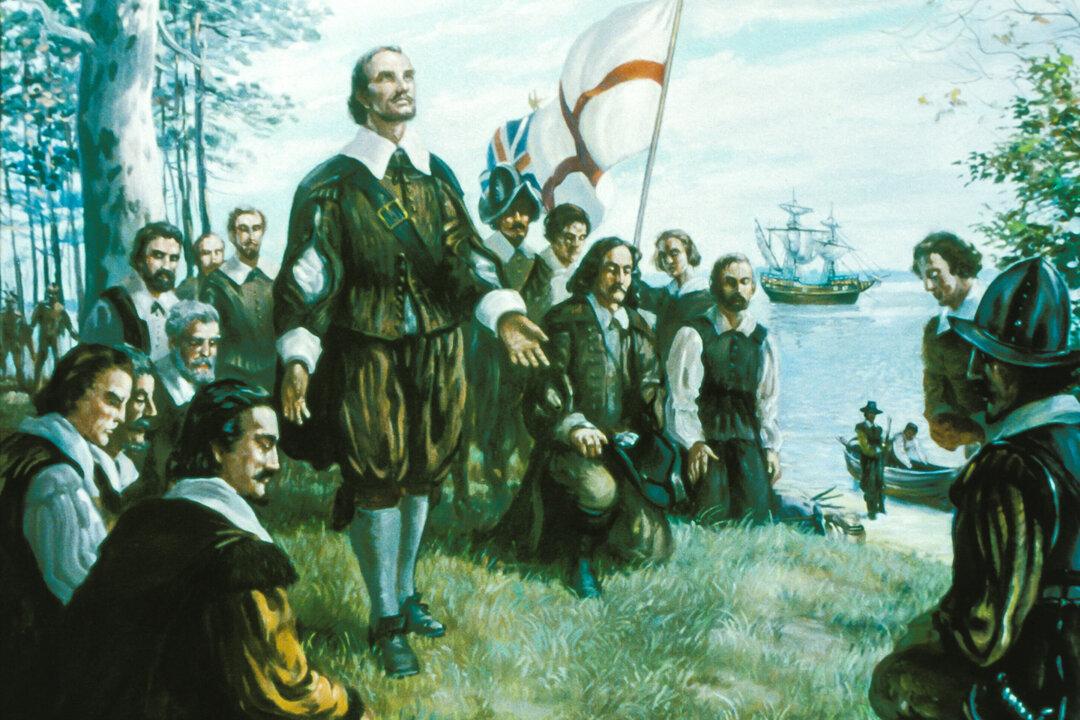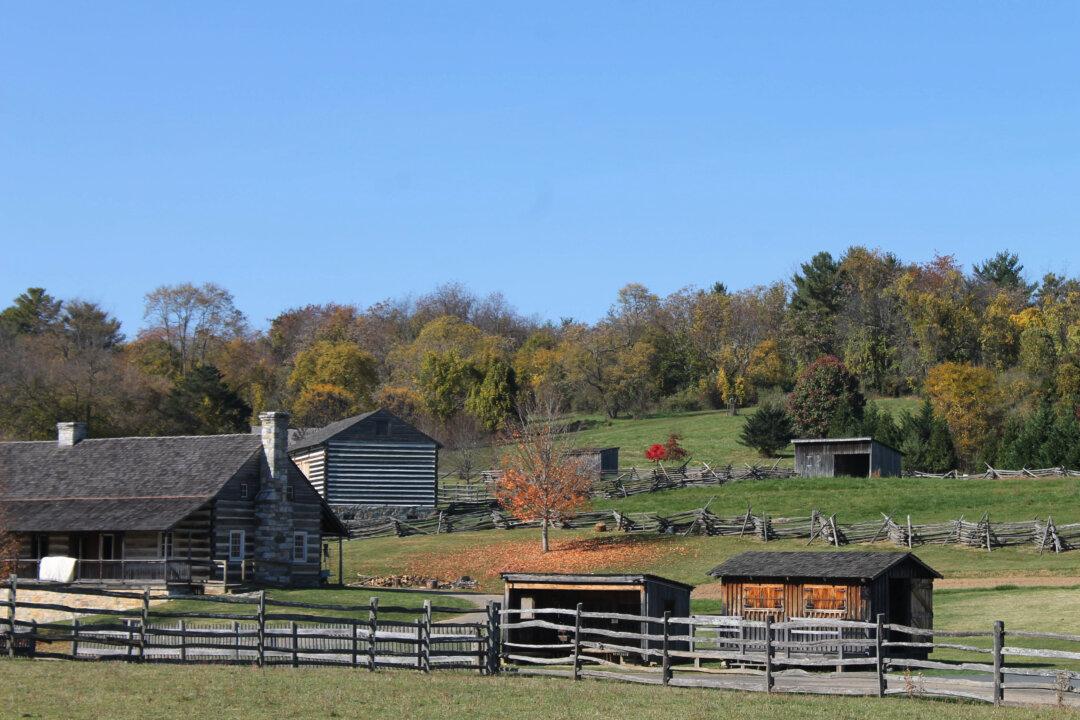When the first settlers of Virginia arrived in 1607, a bountiful land extending west through rolling hills, forested mountains, and fertile river valleys lay before them. It might have seemed like Eden until the colonists faced the droughts of summer and the long deprivation of winter. Though the first colonists barely survived, the land proved ideal for growing tobacco. Virginia established itself as a colony with borders drawn on paper all the way to the Mississippi River. Great plantations hugged the wide mouths of its bays and rivers, where its cash crops could be easily exported. Its piedmont, mountains, and great valley remained unsettled.
Establishing Fort Germanna

Spotswood was convinced that great resources such as iron and silver lay beneath the rolling piedmont of today’s central Virginia, so he searched for immigrants experienced in mining. He found the ideal workers to be Germans, and brought 42 immigrants from the Siegerland region in North Rhine-Westphalia. They came as indentured servants, their passage to the new world secured by four years of servitude to Spotswood.
One hundred miles inland from Williamsburg, Virginia, Lt. Gov. Spotswood established Fort Germanna: a combination of the word ‘German’ and the name of Queen Anne. It was situated at a strategic ford of the Rapidan River, where a five-sided palisade in the form of a pentagon was built. A pentagon shaped blockhouse, at the center of the fort, also served as a place of Protestant worship for the colonists. An elderly German Reformed pastor, Johann Heinrich Haeger (alternatively, Johann Henrich Hager), accompanied the first colonists and ministered there.
Though Virginia had a state church, the Anglican Church, Spotswood put forth an act in 1714 that established the Parish of St. George, allowing religious services to be conducted in German. They were exempt from the tithe to the Anglican Church mandated by the colonial assembly. The struggle for religious freedom in Virginia would continue until the time of Jefferson, but it found a toehold in the provision made for the colony at Germanna. In 1777, Thomas Jefferson drafted the Virginia Statute for Religious Freedom, which disestablished the Church of England in Virginia, and guaranteed freedom of religion to persons of all faiths, including Jews, Muslims, Hindus, and Christians of all denominations. This is often hailed as a precursor to the religious freedoms enumerated in the Bill of Rights in the United States Constitution.

“The Germans live very miserably,” wrote John Fontaine, a friend of Spotswood, who visited the fort in 1715. Inside the fort, where the settler lived, was a row of nine houses. Behind those simple houses were sheds for the settlers’ hogs and other livestock. Though they had been brought to establish mines and iron furnaces, the settlers found themselves primarily engaged in clearing land and simply surviving. They did little actual mining.
Building the ‘American Character’

In 1717, a group of Lutherans from the Palatinate and Baden-Württemberg region of southern Germany attempted to sail to Pennsylvania seeking freedom from religious persecution. Their captain essentially sold them into indentured servitude to Spotswood and they landed, not at Philadelphia, but at Tappahannock, Virginia. These immigrants were initially settled on 400-acre plots across the river from Fort Germanna. While they worked off their captain’s debt mining iron ore and silver, they also farmed. Most everybody in that day grew at least some of their own food. It was not uncommon to farm as well as participate in a trade.
Instead of awarding vast holdings to wealthy Englishmen, the common practice in that day, Spotswood tried something new. Thomas Faircloth, former president of the Germanna Foundation, speculated that Spotswood purposely seated land-hungry colonists in the Virginia piedmont. He wanted to sponsor “small farmers” who would populate the land and form permanent settlements. Germanna, then the most western English settlement, “opened a new chapter in the way immigrant groups were settled in America,” as Rob Sherwood summarizes. According to Faircloth, Spotswood’s experiment involved settling skilled groups of immigrants on large tracts of land where they would build their communities. They would form an “American character,” one of fortitude and strength forged from adversity.
The Legacy of the Virginian Germans

The German were skilled craftsmen: They built houses, mills, and wheelwright shops. They also made fine furniture—a legacy that still lives on in the area’s Clore Furniture factory. The W.J. Carpenter (Zimmerman) family and the Aylor family both made poultry shipping coops until the 1970s. Today an auction house along U.S. Route 29 in Madison County, Virginia, still lovingly maintains the W.J. Carpenter Coop Factory building.
Perhaps the most important legacy of the Virginia Germans was their service in America’s War of Independence. On January 21, 1776, Lutheran pastor John Peter Muhlenberg of Woodstock, Virginia was preaching from the third chapter of Ecclesiastes. “To everything there is a season … a time of war, and a time of peace.” Opening his clerical robe to reveal the uniform of a Continental Army colonel, Rev. Muhlenberg then added, “And this is the time of war.” George Washington had personally asked Muhlenberg to raise up and command the 8th Virginia Regiment. Among his congregation, 162 men enlisted on the spot, and hundreds more would follow. The 8th Virginia Regiment also came to be known as the German Regiment, because of its many German descendants who fought as patriots for the cause of freedom.
Today, descendants of the Germanna colonists still farm in places like the Hebron Valley. They engage in trades of all sorts and many have ventured far from the original settlements and land patents. One has even walked on the moon. Edwin “Buzz” Aldrin, Apollo 11 astronaut who flew in the Lunar Module to the first manned landing on the lunar surface, is a descendant of Germanna colonists. He is just one of the many who have enriched America.





